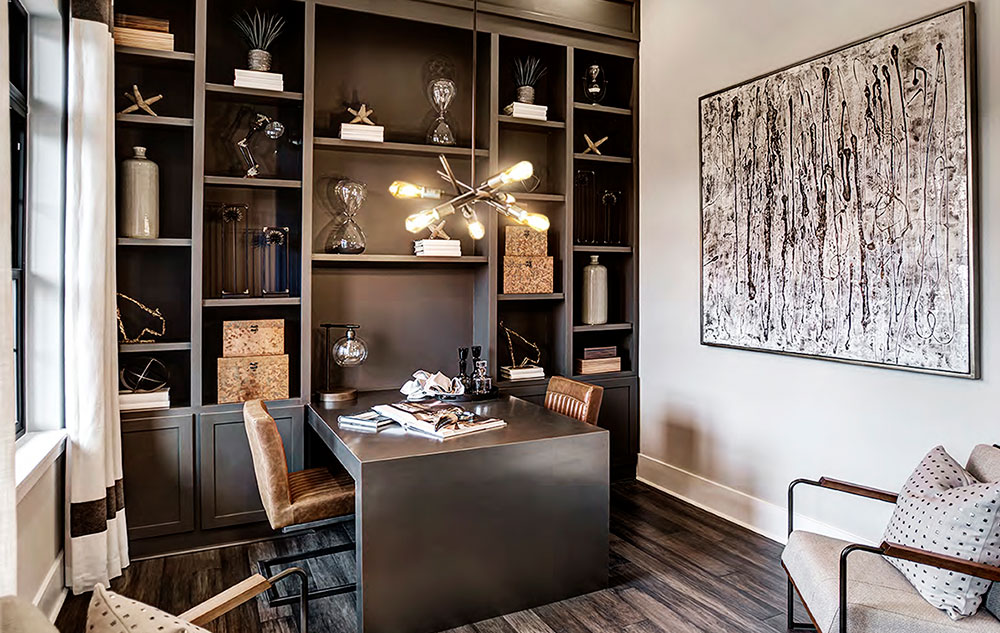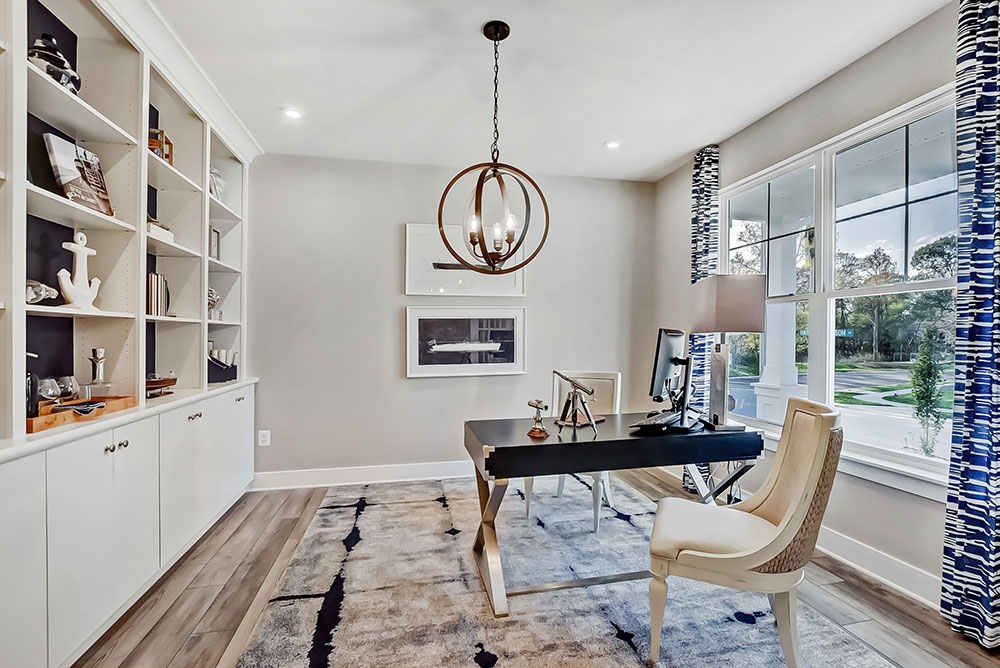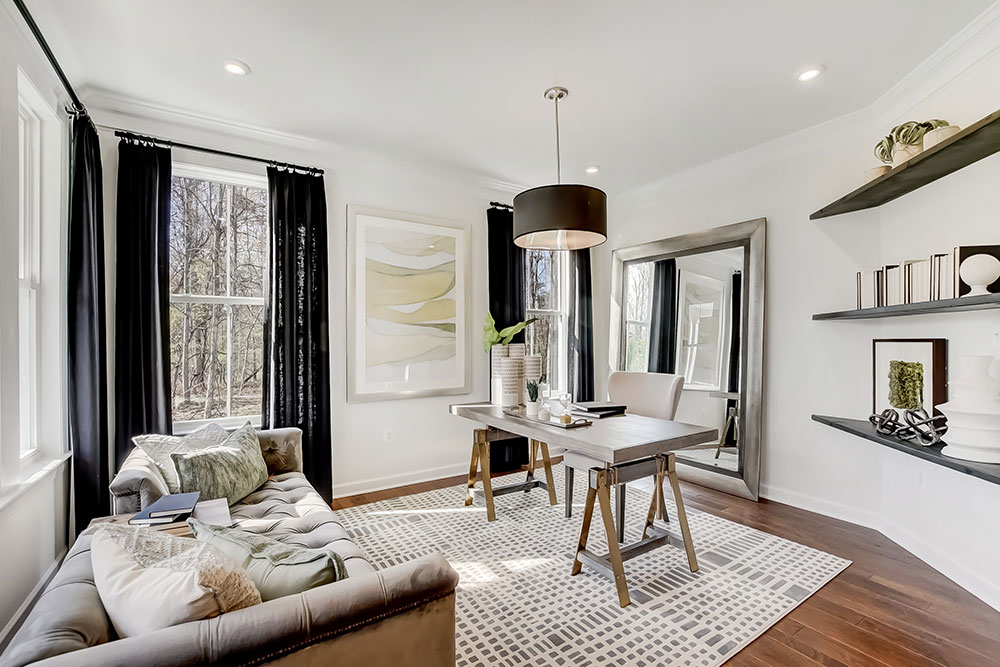For many people, working at home has suddenly gone from being a perk to a necessity. Whether you're setting up shop at the kitchen table or creating a complete home office, it needs to be a space that is ultimately comfortable and productive. Here are some tips for how to light your home workspace.
No matter which room becomes your workspace, proper lighting plays a key role in avoiding fatigue, eye strain and other discomforts. Begin by defining your workspace. Will you work on the kitchen island or dining room table, or create a true home office?
Next, think about the lighting. Layering light is a basic technique that should be used in every room, and especially in a home office. There are three layers of light to consider: ambient or general light, task lighting, and decorative or accent lighting.

Astra Collection | Image: Schumacher Homes & Possibilities for Design
Make sure the location selected has a good source of ambient light. Natural light is ideal: it diffuses throughout the space, bouncing off the walls and ceilings, cutting down on glare that can reflect on the computer monitor and the shiny desk surface.

Barnes Mill Collection | Image: GreenTech Homes & Piper Stromatt
Positioning your desk or workspace correctly also helps to avoid glare. If the room has natural light streaming from windows, place your desk perpendicular to the window, ideally facing north or south so that sunlight does not cast shadows at certain times of the day. If an overhead fixture is the only light source, situate your workstation so that the light shines from behind it.
Don't set your computer monitor in front of the window; the bright background light shining behind the monitor screen causes eye strain. And place your chair at least an arm's length away from the screen so that it can be seen without using reading glasses or squinting.
Other tips for controlling and enhancing ambient light: try adding LED tape lighting behind a monitor or under a desk for diffused light, and use solar shades on a window to soften the light and lessen heat throughout the day.

Conestee Collection | Image: K. Hovnanian Homes
Once you've set up a glare-free workstation, add task lighting, which is the next layer of light. Use dedicated light sources such as desk lamps when focusing on a specific task, like paperwork and filing. A tip: place direct task lights on the opposite side of the hand you write with to avoid casting shadows onto your work from your hand and arm.

Markor Collection | Image: K. Hovnanian Homes
Finally, add accent lighting for visual appeal. Use a pair of small desk lamps to frame your workspace, or install a permanent fixture on a dimmer switch, such as a pendant hung directly over the desk. Wall sconces can throw light on decorative objects in the room to light up bookshelves.
No matter where you land, we have inspiration and design resources for every space. You can find Progress Lighting at your local lighting showroom, or at your favorite online retailer.